






University of Glasgow, UK
Perkinsus marinus respiratory complexes and supercomplexes composition, structure and function.
Lilach Sheiner, University of Glasgow, UK
Structural insights into the evolution of mitochondrial Complex I across Eukaryotes.
James Letts, University of California, Davis, USA
ATP Synthase Dimers: Better Together.
Alena Zíková, Czech Academy of Sciences, Czech Republic
Structural-functional studies of the Toxoplasma complexes III and IV.
Andrew Maclean, University of Glasgow, UK
Towards the functional and structural characterization of brown algae bioenergetics.
María Maldonado, University of California, Davis, USA
Diversity in aerobic respiration across the evolutionary tree of protists: a structural perspective.
Long Zhou, Zhejiang University, China


MSCA postdoctoral fellow, Institut Pasteur, France
Michelle M. LegerStaff Scientist, Okinawa Institute of Science and Technology, Japan
ApuRs, a new family of ultraviolet to blue light absorbing rhodopsin channels from apusomonads.
Luis Javier Galindo González, University of Granada, Spain
Phototaxis and gravitaxis tune the emergence of new collective patterns
Hélène de Maleprade, Sorbonne Université, France
Differentiation of behavioral responses to complex environmental conditions in ciliary swimming and amoeboid locomotion.
Toshiyuki Nakagaki , Hokkaido University, Japan
Biophysics of mechanosensation in protists.
Kirsty Wan, University of Exeter, UK

Dalhousie University, Canada
New predatory representatives of the poorly studied stramenopile group Bigyromonada elucidate the origin of parasitism in Oomycetes and Pirsoniales
Kristina Prokina, Université Paris-Saclay, France
Watching tiny predators: cell biology and eukaryotrophic behaviours in phylogenetically distinct flagellates
Yana Eglit, University of Victoria, Canada
The Evolutionary Significance of Eukaryotrophic Free-living Flagellates Within Sar
Elizabeth Weston, Dalhousie University, Canada
Predatory flagellates as important branches of the eukaryotic tree of life and key members of microbial communities
Denis Tikhonenkov, Russian Academy of Sciences, Russian Federation
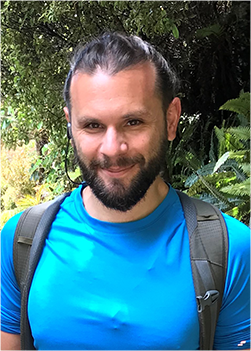
University of Bremen, Germany
The multiple reproductive pathways of planktonic foraminifera
Julie Meilland, CEREGE, France
Bringing Retaria to life
Raphael Morard, University of Bremen, Germany
Phosphate storage in foraminifera - An adaptation to O2 depletion that could counteract anthropogenic coastal eutrophication
Nicolaas Glock, Hamburg University, Germany
Revealing The Diversity And Evolution Of Radiolaria Beyond The Stars Of The Ocean
Miguel Sandin, Biological Station of Roscoff, France
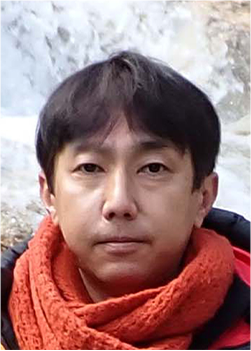
National Institute of Genetics, Japan
Life Cycle, And Genetic Modification Techniques In The Unicellular Polyextremophilic Red Algae Cyanidiophyceae
Shin-Ya Miyagishima, National Inst. of Genetics, Japan
Genome Sequencing And Genetic Transformation Of Chlorarachniophyte Algae
Yoshihisa Hirakwa, Univ. of Tsukuba, Japan
Functional analysis on heterogeneous flagella of the brown algal swarmers
Minori Harada, Hokkaido Univ., Japan
Establishing Genome Editing in Rapaza viridis for Functional Analysis of Kleptoplasty-related Genes
Yuichiro Kashiyama, Fukui Univ. of Tech., Japan
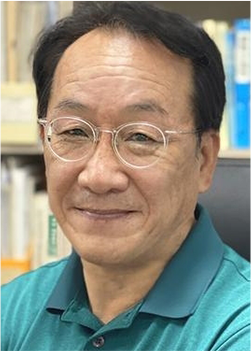
Jeju National University, Korea
Spatiotemporal Variation in Condition, Reproduction, and Protozoan-Trematode Infections of the Manila Clam Ruditapes philippinarum in Anmyeondo Island Tidal Flats, West Coast of Korea
Kwang-Sik Choi, Jeju National University, Korea, Republic of
First Evidence of Mass Mortality in Manila Clams Ruditapes philippinarum Associated with Paramyxean Parasite Eomarteilia granula
Young-Ghan Cho, National Institute of Fisheries Science (NIFS), Korea, Republic of
Molecular Screening Of Oie-Listed And Protozoan Pathogens In Pacific Oysters (crassostrea Gigas) And Mediterranean Mussels (mytilus Galloprovincialis) From Korean Port Waters Using Species-Specific Pcr
Jeong-Hwa Kim, Jeju National University, Korea, Republic of
Prevalence and intensity of Perkinsus marinus infections in farmed oysters (Crassostrea virginica, C. gigas) across the USA, Mexico, Brazil, and South Korea using a novel qPCR-based diagnostic assay
Seung-Hyeon Kim, Kunsan National University, Korea, Republic of
First report of Oblongichytrium spp. in Pacific oysters from Southern and Western coasts of South Korea: Molecular and microscopic insights
S.D.N.K. Bathige, Kunsan National University, Korea, Republic of
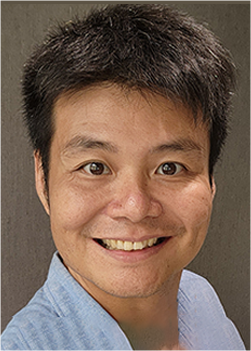
The University of Queensland, Australia
Functional genomics of dinoflagellates
Joseph Tin Yum Wong, Hong Kong University of Science and Technology, Hong Kong
Finding needle in the haystack - omics toolbox for exploration of stress tolerance markers in Symbiodiniaceae
Pranali Deore, The University of Melbourne, Australia
A subcellular proteomic map of the dinoflagellate Karlodinium veneficum
Dayana Salas-Leiva, University Of Cambridge, UK
Omics-powered insights into dinoflagellate diversity, ecology and evolution
Cheong Xin Chan, The University of Queensland, Australia

Hokkaido University, Japan
Skillful cell behavior in the construction of testate amoebae shells
Mami Nomura, Yamagata University, Japan
Elucidating the conditions for floating of planktonic foraminifera: Sinking experiment revisited
Haruka Takagi, University of Tokyo, Japan
Anchoring behaviour in Stentor influenced by geometrical cues and behavioural process
Syun Echigoya, Hokkaido University, Japan
Ciliary Fluid Dynamics Of Swimming, Feeding, Pumping, And Sensing
Takuji Ishikawa, Tohoku University, Japan


IRB Barcelona, Spain
Rubén González MinguénsThe Institute of Evolutionary Biology, Spain
Clonal-aggregative multicellularity in a close relative of animals
Núria Ros-Rocher, Institute Pasteur, France
The changing tree of Holozoa in light of metagenomics
Michelle Leger, Okinawa Institute of Science and Technology, Japan
Simulating the Origins of Multicellularity By Artificial Selection on the Filasterean Capsaspora Owczarzaki.
Gonzalo Bercedo-Saborid, Biologia Evolutiva, Spain
Social Predators: An amoeba that collectively herds prey and sequesters resources
Tristan Henderson, Mississippi State University, United States


Rutgers University, United States
Chung Hyun ChoGregor Mendel Institute, Austria
Multi-omic analysis of community-wide interactions in red algae-dominated geothermal spring habitats
Timothy Stephens, Rutgers University, United States
Toward Molecular Genetic Studies on Acidothermophilic Red Algae in Their Natural Habitats
Takayuki Fujiwara, National Institute of Genetics, Japan
Genomic and epigenetic adaptation of extremophilic red algae
Chung Hyun Cho, Gregor Mendel Institute of Molecular Plant Biology GmbH, Austria
Taxonomic re-evaluation of an extremophilic red alga from Yangmingshan, Taiwan
Han-Yi Fu, National Sun Yat-sen University, Taiwan

Incheon National University, Korea
Global Perspectives on Seaweed Aquaculture: Key Trends, Innovations, and Pathways Forward
Jang Kyun Kim, Incheon National University, Korea, Republic of
Comparative Insights on Land-Based and Open Water Cultivation Systems in Korea
Han-Gil Choi, Wonkwang University, Korea, Republic of
Green Tide on the Southern Coasts of Korea: Major Green Tide Causing Ulva Species, Their Biomass, And Ecological Impacts on Ecosystems
Hyck Je Lee, Sangji University, Korea, Republic of
Offshore Seaweed Farming: Challenges and Opportunities
Sang-Yul Park, Jeju National University, Korea, Republic of
Structure and Outlook of the Korean Pyropia industry
Jin Suk Heo, Seaweed Research Institute, National Institute of Fisheries Science, Korea, Republic of

Xiamen University, China
Peritrichs found in Lake Weishan, a wetland in China
Weibo Song, Ocean University of China, China
Mammalian trypanosomes and their risks for human infection in China
Zhao-Rong Lun, Su Yat-Sen University, China
Mechanisms of rumen ciliates in controlling methane emissions
Jie Xiong, Institute of Hydrobiology, Chinese Academy of Sciences, China
Subpellicular microtubule and dynein transport in morphogenesis of Plasmodium
Jing Yuan, Xiamen University, China
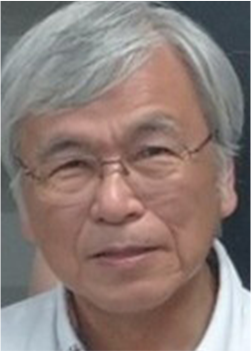
Kobe University, Japan
Structural study of icosahedral viruses using Cryo-EM
Chihong Song, Pusan National University, Korea, Republic of
Cryo-EM structures of human neuronal gap junction channel
Seu-Na Lee, Institute for Basic Science, Korea, Republic of
Effect of Fixation Methods on Protist Ultrastructure: Freeze-Substitute vs. Conventional Chemical Fixation
Yasuhiro Fukuda , Tohoku University, Japan
Re-evaluation of Water Freeze-drying for Scanning Electron Microscopy
Toshinobu Suzaki, Kobe University, Japan
Clarification of the morphology of Radiolaria, Phaeodaria and Ciliophora using the micro X-ray computed tomography
Momoka Kato, Shimane University, Japan
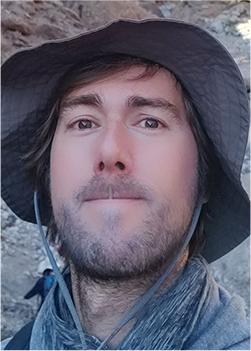

Sorbonne University-CNRS, France
Mahwash JamySwedish University of Agricultural Sciences, Sweden and University of Oslo, Norway
Insights from the Working Group on Trait Annotation of Protists and results for the global ocean
Pierre Ramond, Sorbonne University CNRS Benthic Ecogeochemistry Laboratory UMR 8222, France
Trophic strategies in marine protists: annotation and global distributions
Luciana Santoferrara, Hofstra University, United States
Trait-based approach coupled to metatranscriptomic-derived sequence similarity network:towards the depiction of the functional diversity of freshwater microbial eukaryotes
Arthur Monjot, Université de Bretagne Occidentale: UBO, France
Comparative Trait Databases of Cercozoa and Amoebozoa: Functional Insights from Terrestrial Ecosystems
Kenneth Dumack, University Of Cologne, Germany

Charles Univerity, Czech Republic
The role of the environment in the distribution of scaled chrysophytes: Biogeographic patterns or not?
Peter A. Siver, Connecticut College, USA
Speciation dynamics in Synura (Chrysophyceae): A tale of three species
Pavel Skaloud, Charles University, Czech Republic
Stable dynamics of protists in European lakes: spatio-temporal patterns and ecological significance
Christina Bock, University of Duisburg-Essen, Germany
Single-cell genomics of a bloom-forming phytoplankton species reveals population genetic structure across continents
Raphael Gollnisch, (1)University of Oxford Lund University, (2)UK Sweden

Korea Institute of Ocean Science and Technology, Korea
Phytoplankton recruit specific microbial assemblages and exhibitphylosymbiotic patterns
Joo-Hwan Kim, Hanyang University, Korea, Republic of
The presence of highly toxic Dinophysis fortii populations in Japan
Satoshi Nagai, Fisheries Technology InstituteJapan Fisheries Research and Education Agency, Japan
Toxin production in bloom-forming, harmful alga Alexandrium pacificum (Group IV) is regulated by cyst formation-promoting bacteria Jannaschia cystaugens NBRC 100362T
Jiang Yue, Third Institute of Oceanography, China
Genetic diversity and ecophysiological impacts of the toxic benthic dinoflagellate Ostreopsis in Korean coastal waters
Bora Lee, Korea Institute of Ocean Science and Technology, Korea, Republic of

Ocean University of China, China
Chromatin dynamics regulating DNA elimination in Tetrahymena
Kensuke Kataoka, National Institute for Basic Biology, Japan
The role of histone methylations on DNA elimination in the ciliate Paramecium
Therese Solberg, Keio University School of Medicine, Japan
Cryptic transcription ensures faithful DNA elimination in Tetrahymena
Miao Tian, Ocean University of China, China
Soma-derived 30 nt small RNAs precisely protect non-transposon DNA during genome rearrangement in Euplotes vannus
Feng Gao, Ocean University of China, China